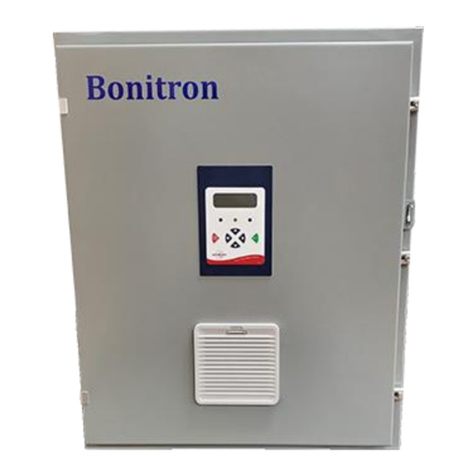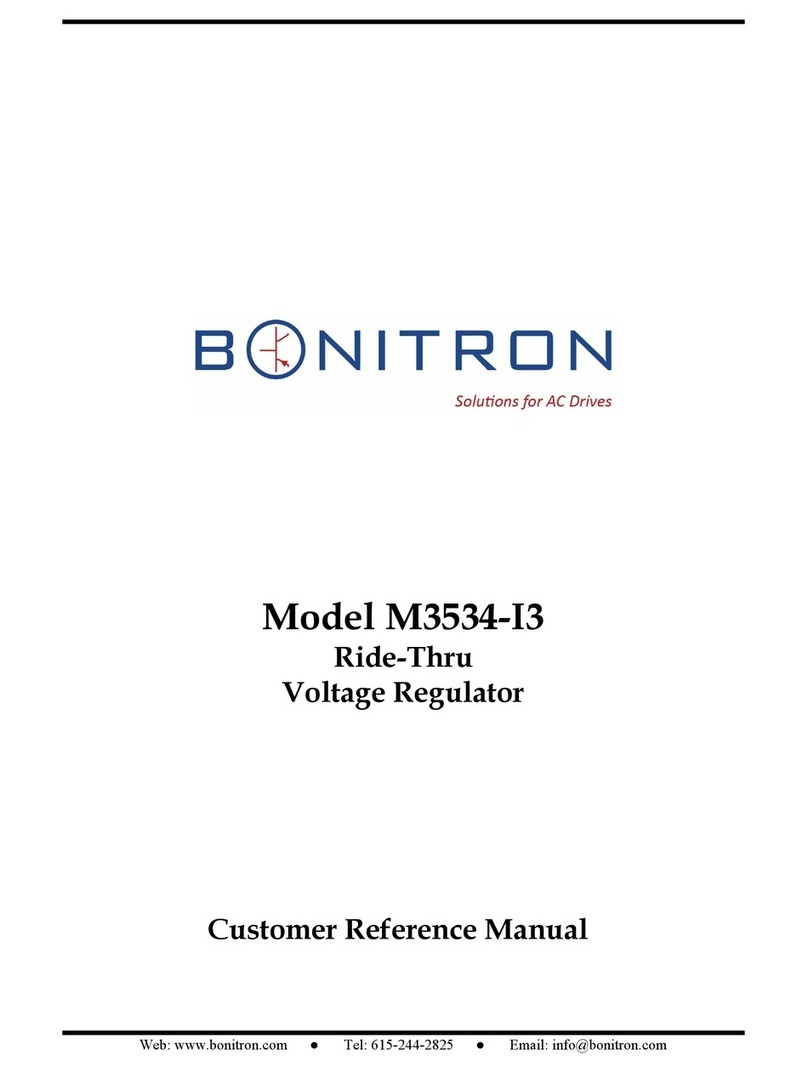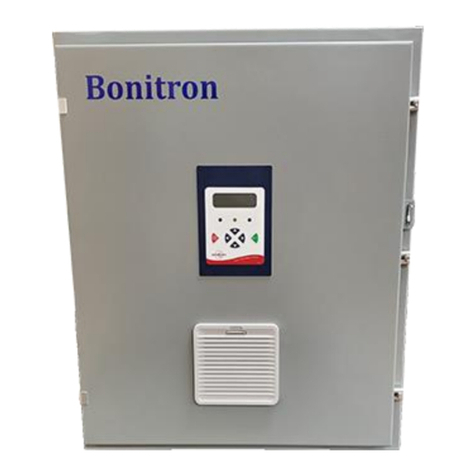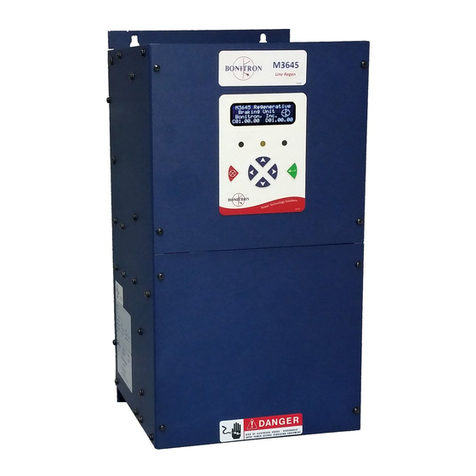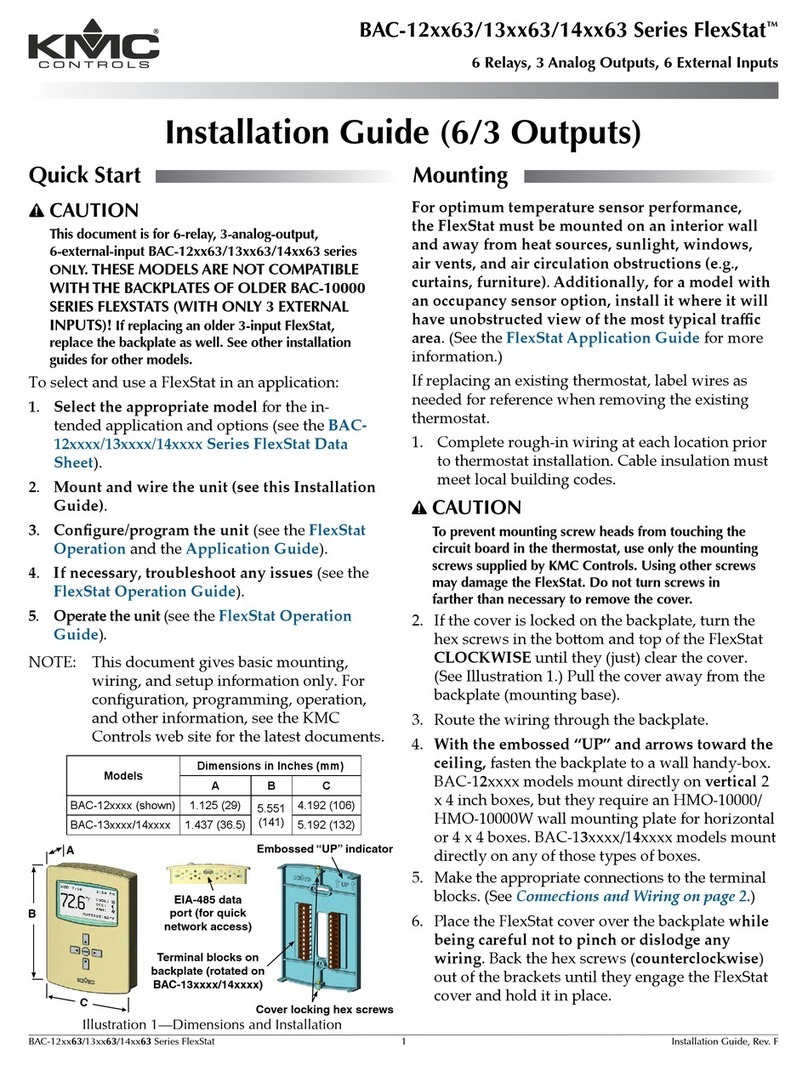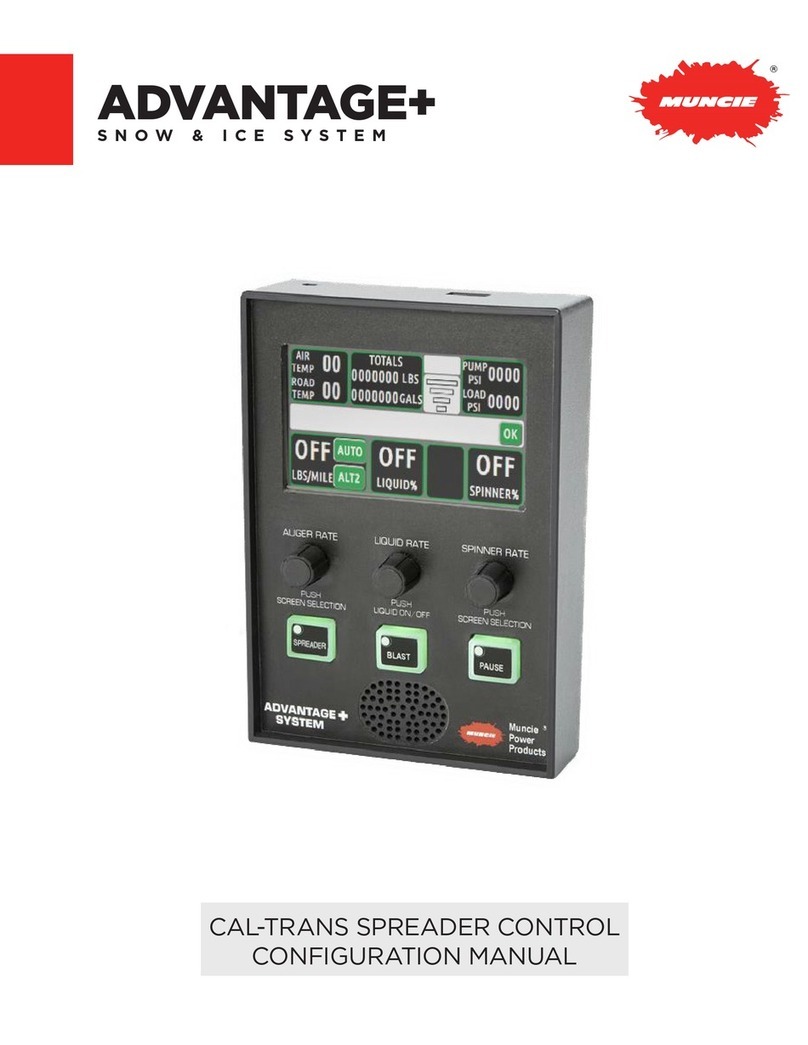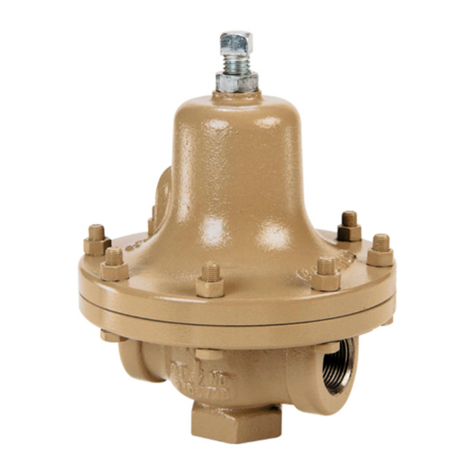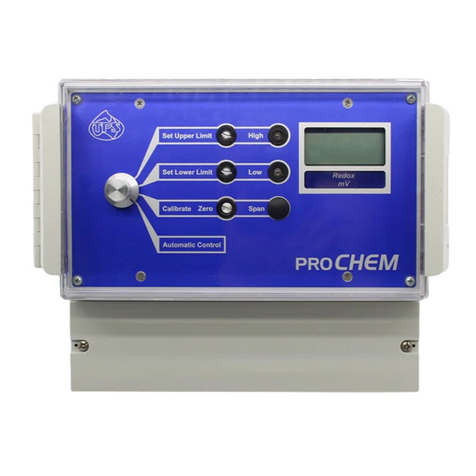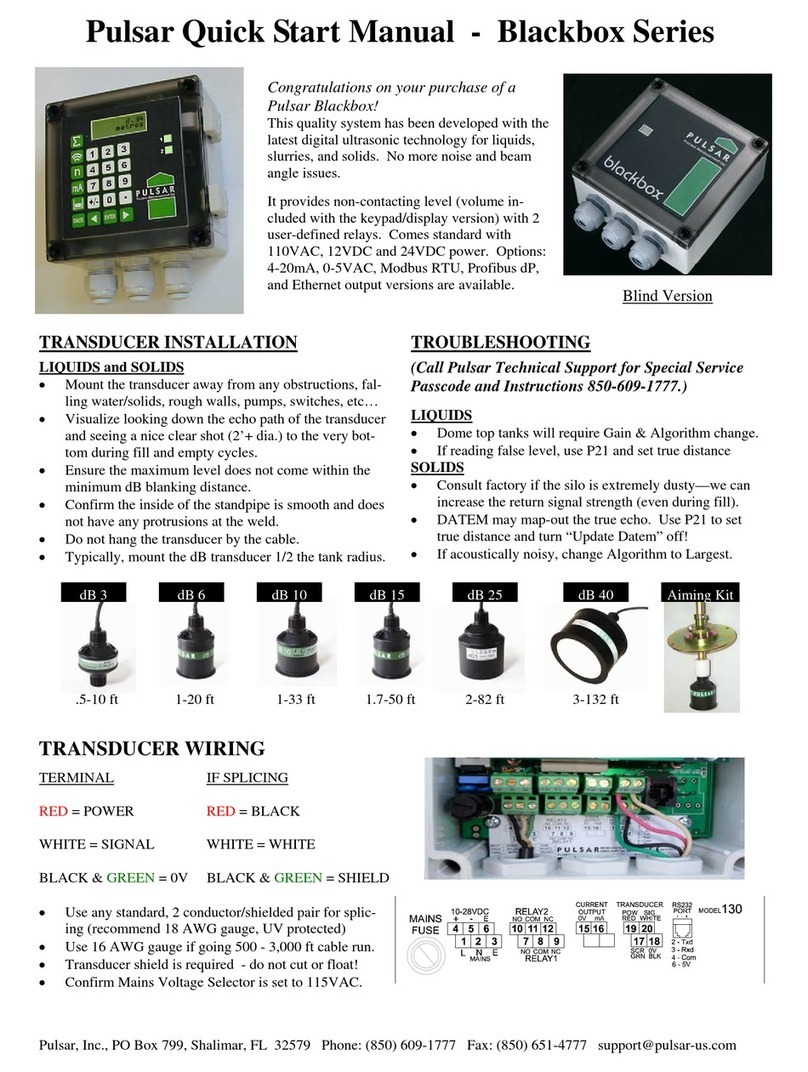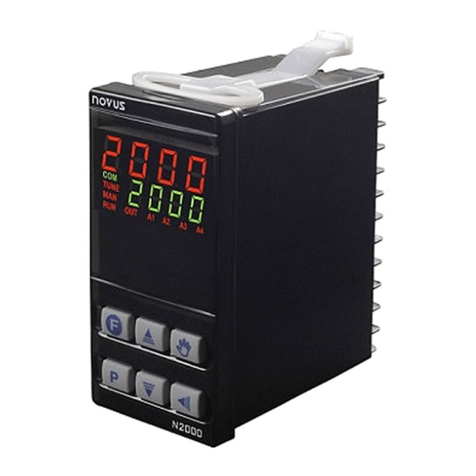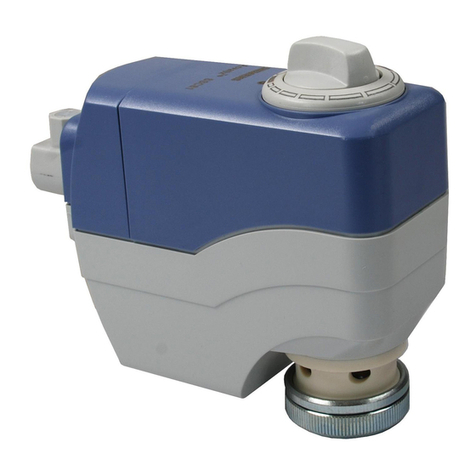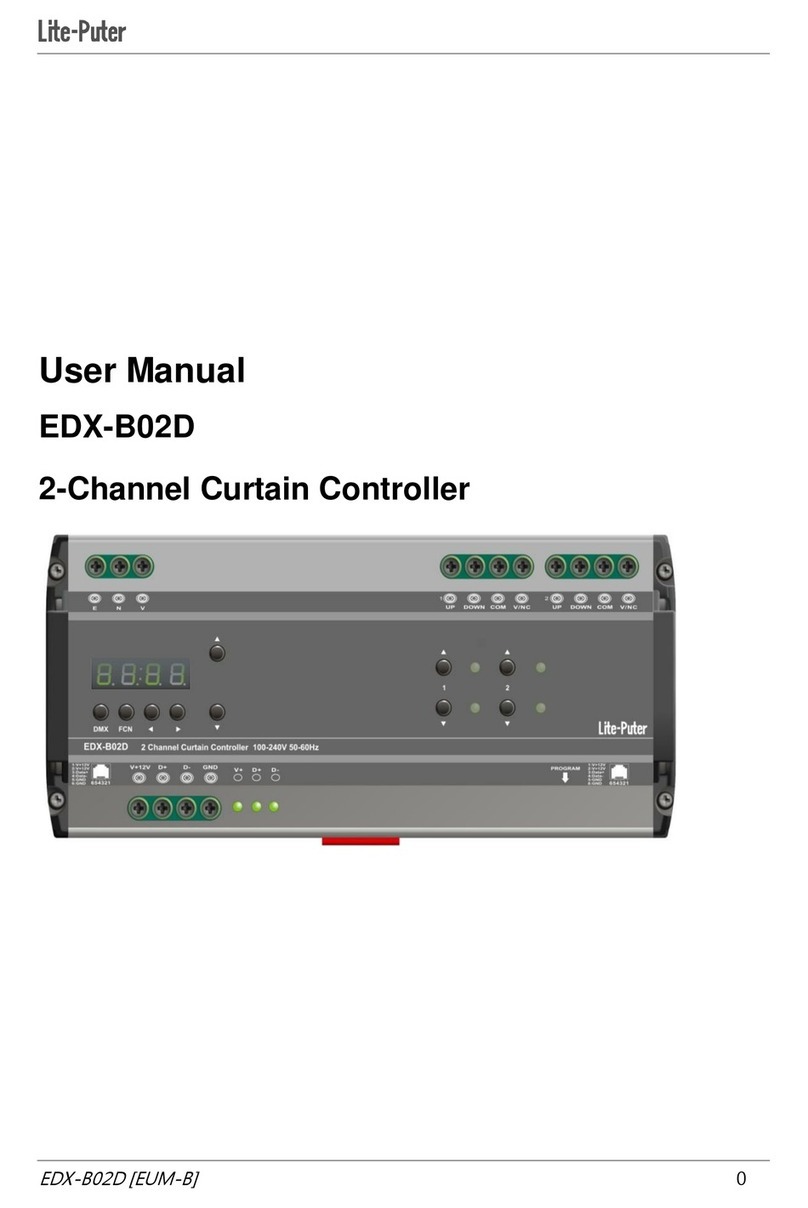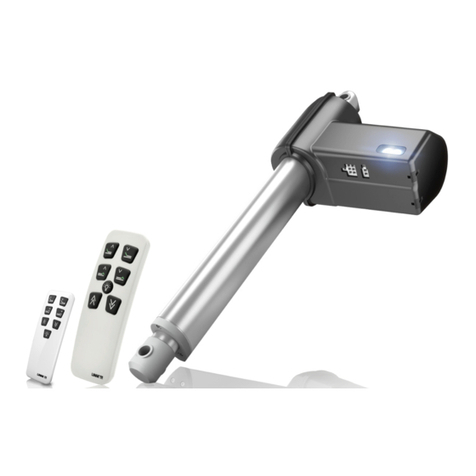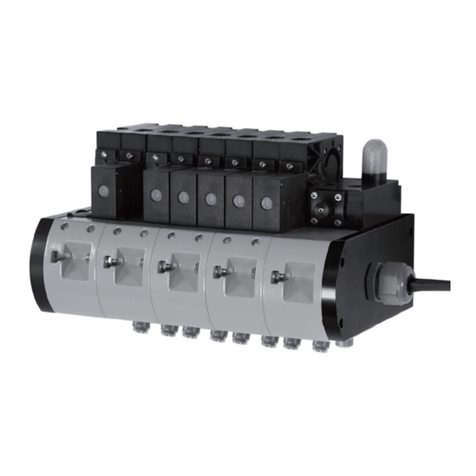bonitron M3345 User manual

Model M3345
Line Regeneration Module for AC Drives
Customer Reference Manual

Bonitron, Inc.
ii
Bonitron, Inc.
An Industry Leader in AC Drive Systems and Industrial Electronics
OUR COMPANY
Bonitron is an international supplier of power controls designed to improve the performance and
reliability of electronic systems and variable frequency drives. Located in Nashville, Tennessee,
and founded in 1962, Bonitron has gained a reputation for designing and manufacturing
products with the highest possible degree of quality and reliability.
Bonitron has all the necessary resources in-house for complete electronic product development
and manufacturing. Engineering facilities include a CAD lab for circuit board design and
engineering labs for prototype testing and evaluation. Production facilities include production
areas for circuit board assembly, a machine tool and sheet metal shop for chassis fabrication,
and a systems assembly and checkout area. With these assets, Bonitron is positioned to be a
leader into the future while maintaining first class support for their current customer base.
Worldwide sales of equipment are generated mainly by reputation and referrals. Our customer
base includes all of the major drive manufacturers, their distributors, OEMs, end users, and
many other satisfied companies. Equipment is installed throughout the United States as well as
in Canada, Mexico, Costa Rica, Argentina, Brazil, Chile, Venezuela, Northern Ireland, the
Netherlands, Spain, Hungary, Israel, Turkey, China, India, Indonesia, Singapore, Taiwan, and
the Philippines.

Bonitron, Inc.
iii
TALENTED PEOPLE MAKING GREAT PRODUCTS
The engineering team at Bonitron has the background and expertise needed to design, develop,
and manufacture the quality industrial systems demanded by today’s client. A strong academic
background supported by continuing education is complemented by many years of hands-on
field experience. Expertise encompasses a broad range of applications and engineering
solutions such as modern power conversion design techniques and microprocessor-based
controls. This insures a solution tailored to the specific needs of the client.
A clear advantage that Bonitron has over many competitors is combined on-site engineering
labs and manufacturing facilities. This allows the engineering team to have immediate access
to and response from testing and manufacturing. This not only saves time during prototype
development, but also is essential to providing only the best quality products.
AC DRIVE OPTIONS
In 1975, Bonitron began working with the AC inverter drive specialists at synthetic fiber plants to
develop speed control systems that could be interfaced to their plant process computers. Since
that time, Bonitron has developed AC drive option modules that help overcome many of the
problems encountered in applications of modern AC variable frequency drives.
Bonitron’s Ride-Thru module provides protection from AC line voltage sags while the Line
Regen and Resistive Braking modules provide DC Bus regulation for over-voltage due to
regenerated voltage.
Bonitron AC drive modules are available to provide Undervoltage, Overvoltage, Line Side, Load
Side, Maintenance, Power Quality, and Green / Sustainability solutions. These products are
compatible with the drives of all major manufacturers and have become the standard in many
industries including semiconductor, oil, and fiber.
WORLD CLASS PRODUCTS
Bonitron has developed over 3000 different modules and systems. Bonitron is willing and able
to meet the unique specifications the client may request.
Some Bonitron products include:
Power Dip Ride-Thru Modules
Power Outage Ride-Thru Modules
Line Regen Modules
Resistive Braking Modules
Modular High Speed Precision AC Inverter Systems
Inverter Upgrade Modules
Multi-motor, Multi-phase Current Sensors
Battery Production Charging Systems
Data Acquisition Systems
Process Controllers
Temperature Control Systems
RMS True Reading Digital Voltmeters, Ammeters, and Frequency Meters

M3345
iv
1.INTRODUCTION..........................................................................................................................1
1.1.Who should use ............................................................................................................................ 1
1.2.Purpose and Scope........................................................................................................................ 1
1.3.Manual version and change record ............................................................................................... 1
Figure 1-1: Typical M3345 Unit in the “S” and “C” Chassis...................................................................1
2.PRODUCT DESCRIPTION.............................................................................................................2
2.1.Related Docs................................................................................................................................. 2
2.2.Part Number Breakdown .............................................................................................................. 2
Figure 2-1: Example of M3345 Part Number Breakdown .......................................................................2
Table 2-1: Voltage Rating........................................................................................................................3
Table 2-2: Current Ratings.......................................................................................................................3
Table 2-3: Chassis Styles .........................................................................................................................3
2.3.General Specifications Chart ........................................................................................................ 4
Table 2-4: General Specifications ............................................................................................................4
2.4.General Precautions and Safety Warnings ................................................................................... 5
3.INSTALLATION INSTRUCTIONS..................................................................................................7
3.1.Environment ................................................................................................................................. 7
3.2.Unpacking..................................................................................................................................... 7
3.3.Mounting ...................................................................................................................................... 7
Figure 3-1: M3345 Mounting Orientation................................................................................................8
3.4.Wiring and Customer Connections............................................................................................... 9
3.4.1.Power Wiring ........................................................................................................................ 9
Table 3-1: Power Terminal Specifications – 10 to 45 Amp Chassis......................................................10
Table 3-2: Power Terminal Specifications – 60&90 Amp Chassis........................................................10
Table 3-3: Power Terminal Specifications – 120 Amp Chassis .............................................................10
3.4.2.I/O Wiring........................................................................................................................... 10
Table 3-4: I/O Terminal Specifications – S Chassis...............................................................................10
Table 3-5: I/O Terminal Specifications – B and X Chassis ..................................................................11
Table 3-6: I/O Terminal Specifications – Y, C, W, Z, and V Chassis....................................................11
Figure 3-2: “S” Chassis Connections .....................................................................................................11
Figure 3-3: “W” Chassis Connections....................................................................................................11
Figure 3-4: “V” Chassis Connections ....................................................................................................12
Figure 3-5: “X” and “B” Chassis Connections.......................................................................................12
Figure 3-6: 60&90 Amp “C” Chx Conn. ...........................................................................................12
Figure 3-7: 120 Amp “C” Chx Conn......................................................................................................12
Figure 3-8: “Y” and “Z” Chassis Connections.......................................................................................12
3.5.Typical Configurations ............................................................................................................... 12
Figure 3-9: M3345 10-120 Amp Single Drive / Regen Field Wiring Diagram......................................13
Figure 3-10: M3345 Multiple Drives/ Regens Field Wiring Diagram ...................................................14
Figure 3-11: M3345 Master Slave I/O Connection Diagram .................................................................15
Figure 3-12: Control Board & Jumper Configuration ............................................................................16
4.OPERATION..............................................................................................................................17
4.1.Functional Description ............................................................................................................... 17
4.2.Features....................................................................................................................................... 17
4.2.1.Fusing.................................................................................................................................. 17
4.2.2.Internal Line Filtering ......................................................................................................... 17
4.2.3.Indicators............................................................................................................................. 18
4.2.4.Status Contact ..................................................................................................................... 18
4.2.5.I/O For Paralleling Regens.................................................................................................. 18

Table of Contents
v
4.3.Startup......................................................................................................................................... 19
4.3.1.Pre-power Checks ............................................................................................................... 19
4.3.2.Startup Procedure and Checks ............................................................................................ 19
4.3.3.Cooling Fan......................................................................................................................... 19
4.4.Operational Adjustments ............................................................................................................ 19
5.MAINTENANCE AND TROUBLESHOOTING...............................................................................21
5.1.Periodic Testing.......................................................................................................................... 21
5.2.Maintenance Items...................................................................................................................... 21
5.3.Troubleshooting.......................................................................................................................... 21
5.3.1.POWER lamp is out:........................................................................................................... 21
5.3.2.RUN light is out .................................................................................................................. 21
5.3.3.Status Contact remains open after a 5 second delay ........................................................... 22
5.3.4.Meter showing excessive current when in standby ( >3% rated current) ........................... 22
5.3.5.Drive trips on DC Bus Overvoltage.................................................................................... 22
5.3.6.OVERLOAD light is flickering .......................................................................................... 22
5.3.7.CURRENT LIMIT light is on............................................................................................. 22
5.3.8.Technical Help – before you call ........................................................................................ 23
6.ENGINEERING DATA................................................................................................................25
6.1.Ratings Charts............................................................................................................................. 25
Table 6-1: Ratings and Specifications – 230VAC .................................................................................25
Table 6-2: Ratings and Specifications – 380VAC .................................................................................26
Table 6-3: Ratings and Specifications – 460VAC .................................................................................27
6.2.Watt Loss.................................................................................................................................... 28
6.3.Certifications .............................................................................................................................. 28
6.4.Fuse/Circuit Breaker Sizing and Rating ..................................................................................... 28
Table 6-4: Replacement Fuses ...............................................................................................................28
6.5.Dimensions and Mechanical Drawings ...................................................................................... 29
Figure 6-1: M3345 “S” Chassis Dimensional Outline ...........................................................................29
Figure 6-2: M3345 “W” Chassis Dimensional Outline..........................................................................30
Figure 6-3: M3345 “V” Chassis Dimensional Outline...........................................................................31
Figure 6-4: M3345 “B” Chassis Dimensional Outline...........................................................................32
Figure 6-5: M3345 “B” Chassis with Fan Dimensional Outline............................................................33
Figure 6-6: M3345 “C” Chassis Dimensional Outline...........................................................................34
Figure 6-7: M3345 “X” Chassis Dimensional Outline...........................................................................35
Figure 6-8: M3345 “X” Chassis with Fan Dimensional Outline............................................................36
Figure 6-9: M3345 “Y” Chassis Dimensional Outline...........................................................................37
Figure 6-10: M3345 “Z” Chassis Dimensional Outline .........................................................................38
6.6.Block Diagram............................................................................................................................ 39
Figure 6-11: Line Regen Functional Block Diagram .............................................................................39
7.APPENDIX.................................................................................................................................41
7.1.Application Notes ....................................................................................................................... 41
7.1.1.Sizing the Line Regeneration Control................................................................................. 41
7.1.2.Calculating Energy Savings ................................................................................................ 41
7.1.3.Savings Example................................................................................................................. 42

M3345
vi
This page intentionally left blank.

User’s Manual
1
1. INTRODUCTION
1.1. WHO SHOULD USE
This manual is intended for use by anyone who is responsible for integrating,
installing, maintaining, troubleshooting, or using this equipment with any AC Drive
System.
Please keep this manual for future reference.
1.2. PURPOSE AND SCOPE
This manual is a user’s guide for the Model M3345 Line Regen Control modules. It
provides you with the necessary information to successfully install and use the
M3345 modules in your application.
In the event of any conflict between this document and any publication and/or
documentation related to the application, the latter shall have precedence.
1.3. MANUAL VERSION AND CHANGE RECORD
Ratings Charts are updated in Rev 05a and Rev 05b.
Figure 1-1: Typical M3345 Unit in the “S” and “C” Chassis

M3345
2
2. PRODUCT DESCRIPTION
The need for regenerated voltage control occurs when the frequency of an AC motor is
greater than the frequency of the AC line or variable frequency drive providing power to
the motor. In this case, the motor acts as a generator. The energy generated by a
motor must be dissipated or returned to the power source. If this energy is not
controlled, the motor may run with high voltage, the energy may be dissipated as heat in
the motor, or the drive may trip on an overvoltage condition.
Bonitron’s Model 3345 Regen Module is used for regeneration control of any AC drive
system that uses a fixed bus system, such as the bus system used on AC PWM drives.
The Regen module can pass the regenerated energy from the DC bus of the drive to the
AC line. This provides for regulation of the DC bus and prevents the drives from tripping
on overvoltage.
When a dynamic braking resistor is used with a PWM drive, the regenerated energy is
dissipated as heat and energy is wasted. When the Model 3345 Regen Module is used,
the regenerated energy is returned to the input AC line with near unity power factor.
Substantial energy savings may occur as the regenerated energy can be used to power
other equipment.
2.1. RELATED DOCS
COMMON BUS SHARING AND ISOLATION DIODES
•For applications with multiple drives
•M3345D, M3345CBM
BRAKING TRANSISTORS
•For redundant operation with M3345 or for applications above 270A
•M3452, M3575T
BRAKING RESISTORS
•Used with Braking Transistors
•M3575R, M37775R
2.2. PART NUMBER BREAKDOWN
Figure 2-1: Example of M3345 Part Number Breakdown
BASE MODEL NUMBER
VOLTAGE RATING
CURRENT RATING
CHASSIS STYLE
CURRENT METER
COOLING FAN
SPECIAL OPTIONS
M3345 4 1 S M 0F
FREQUENCY
50HZ

User’s Manual
3
BASE MODEL NUMBER
The Base Model Number for all Line Regen Controllers is M3345.
VOLTAGE RATING
A 1 digit code represents the 3∅AC line input voltage to the Regen module. The
voltage rating must be selected for the system voltage that will be applied.
Table 2-1: Voltage Rating
RATING CODE VOLTAGE
2 230 - 240VAC
3 380 - 415VAC
4 460 - 480VAC
CURRENT RATING
A 1-digit code represents the maximum DC current which the Regen module can
dissipate. This is an absolute maximum rating.
Table 2-2: Current Ratings
RATING CODE CURRENT
0 10 Amps
1 20 Amps
2 30 Amps
4 45 Amps
A 60 Amps
5 90 Amps
6 120 Amps
CHASSIS STYLE
Table 2-3: Chassis Styles
CHASSIS CODE DESCRIPTION SIZE (H X WX D)
S (10-45 Amps) Type-1 enclosure 17.75” x 6.00” x 11.00”
B (10-45 Amps) Type-13 JIC type wall
mount enclosure
without fan: 17.50” x 16.25” x 8.25”
with fan: 17.50” x 18.50” x 8.25”
X (10-45 Amps) Open chassis, panel
mount backplate
without fan: 15.00” x 15.10” x 8.50”
with fan: 15.00” x 18.00” x 8.50”
Y (30-90 Amps) Open chassis, panel
mount backplate 16.00” x 20.00” x 11.00”
C (30-120 Amps) Type-13 JIC type wall
mount enclosure 26.50” x 23.00” x 10.50”
W (60-90 Amps) Type-1 enclosure 20.00” x 10.00” x 10.50”
Z (60-120 Amps) Open chassis, panel
mount backplate 24.00” x 20.00” x 11.00”
V (120 Amps) Type-1 enclosure 27.00” x 10.00” x 14.50”
Type-1 may also be known as ‘bookshelf’.
See Section 6.5 for chassis mounting and dimensional outlines.

M3345
4
CURRENT METER
An “M” in this position indicates the inclusion of a DC Regen current meter with the
Regen module. A “0” in this position will omit the meter. A meter is provided as a
standard part of all Type-13 JIC chassis modules and Type-1 chassis modules and is
optional for all open-chassis modules.
COOLING FAN
An “F” in this position indicates the inclusion of a cooling fan with the Regen module.
A “0” in this position will omit the cooling fan. A cooling fan is provided as a standard
part of all chassis types except for the “B” and “X” chassis modules; however the
cooling fan is an available option for the “B” and “X” chassis modules. Please note
that a Regen module’s rating is somewhat dependant on the use of a cooling fan.
Refer to the tables in Section 6 of this manual to determine if a cooling fan is
required for your application.
SPECIAL OPTIONS
•A “0” in this position indicates the unit is not Master / Slave selectable.
•An “M” in this position indicates the unit is 60A or higher and is Master / Slave
selectable.
ATTENTION!
Units with current ratings of 60-90 Amps will support Master/Slave operation.
Units with current ratings of 10-45 Amps, and of 120 Amps will not support
Master/Slave operation.
FREQUENCY
•If the unit is for use on 60Hz systems, omit this position.
•50Hz in this position indicates the unit is for use on 50Hz systems.
2.3. GENERAL SPECIFICATIONS CHART
Table 2-4: General Specifications
PARAMETER SPECIFICATION
Connections
Input AC Line
•Three Phase
•Rated Voltage ±10%
•50Hz or 60Hz
Drive DC Bus
•100% of rated DC current
Ground
Power Factor Greater than 90%
Current Limit 100% DC Rating
Operating Temp 0 to +40°C
Storage Temp -20 to +65 °C
Humidity Below 90%
Non-condensing
Atmosphere Free of corrosive or conductive gas and dust
Status Indicators
Power Light
Run
Current Limit
Overload
Current Meter
I/O Ready

User’s Manual
5
2.4. GENERAL PRECAUTIONS AND SAFETY WARNINGS
DANGER!
•HIGH VOLTAGES MAY BE PRESENT!
•NEVER ATTEMPT TO OPERATE THIS PRODUCT WITH THE
ACCESS DOORS OR COVERS OPENED!
•NEVER ATTEMPT TO SERVICE THIS PRODUCT WITHOUT
FIRST DISCONNECTING POWER TO AND FROM THE UNIT!
•FAILURE TO HEED THESE WARNINGS MAY
RESULT IN SERIOUS BODILY INJURY OR DEATH!
CAUTION!
•THIS PRODUCT WILL GENERATE HIGH AMBIENT
TEMPERATURES DURING OPERATION.
•THIS PRODUCT SHOULD BE INSTALLED ON A NON-
FLAMMABLE SURFACE WITH CLEARANCES OF AT LEAST
TWO INCHES IN ALL DIRECTIONS.
•ALWAYS ALLOW AMPLE TIME FOR THE UNIT TO COOL
BEFORE ATTEMPTING SERVICE ON THIS PRODUCT.
•BEFORE ATTEMPTING INSTALLATION OR REMOVAL OF
THIS PRODUCT,BE SURE TO REVIEW ALL DRIVE AND/OR
RESISTIVE LOAD DOCUMENTATION FOR PERTINENT
SAFETY PRECAUTIONS.
•INSTALLATION AND/OR REMOVAL OF THIS PRODUCT
SHOULD ONLY BE ACCOMPLISHED BY A QUALIFIED
ELECTRICIAN IN ACCORDANCE WITH NATIONAL
ELECTRICAL CODE OR EQUIVALENT REGULATIONS.
ANY QUESTIONS AS TO APPLICATION, INSTALLATION OR SERVICE
SAFETY SHOULD BE DIRECTED TO THE EQUIPMENT SUPPLIER.

M3345
6
This page intentionally left blank

User’s Manual
7
3. INSTALLATION INSTRUCTIONS
CAUTION!
Installation and/or removal of this product should only be performed by a
qualified electrician in accordance with National Electrical Code or local
codes and regulations.
Proper installation of the M3345 Regen Modules should be accomplished following the
steps outlined below. Be sure to refer to the AC Drive instruction manual as these steps
are performed. Please direct all installation inquiries that may arise during the installation
and start up of this product to the equipment supplier or system integrator.
3.1. ENVIRONMENT
The module should be installed in an area protected from moisture and falling debris.
Buildup of dust or debris may cause poor performance and possibly a failure.
Operating in a wet environment can pose a shock hazard. The recommended
temperature range for operating this module is 0 to +40°C.
3.2. UNPACKING
Upon receipt of this product, please verify that the product received matches the
product that was ordered and that there is no obvious physical damage to the unit. If
the wrong product was received or the product is damaged in any way, please
contact the supplier from which the product was purchased.
3.3. MOUNTING
The installation site for the module should be chosen with several considerations in
mind:
•When mounting Regen units in an enclosure, power dissipation should be taken
into account. Refer to Section 6.2 Watt Loss for details.
•The unit requires a minimum clearance of two (2) inches in all directions around it
when mounted near a non-heat source.
•Unit should not be exposed to falling debris or condensation.
Once the installation site has been selected as outlined above, the unit should be
mounted in place.
The M3345 must be properly oriented for proper heat flow through the unit. The
M3345 must be mounted with the rear surface of the unit to the mounting surface.
Unit may be mounted vertically or horizontally as shown in Figure 3-1A.
Do Not mount the unit in an upside-down position or on the underside of a mounting
surface as shown in Figure 3-1B.
Do Not mount the unit in a horizontal position with its side parallel to the mounting
surface or floor as shown in Figure 3-1C.
Refer to Table 2-3: Chassis Styles in Section 2.2 of this manual to determine the
chassis for the unit. Mounting dimensions and provisions vary by unit chassis. See
Figure 3-1 for Mounting Orientation information and Section 6.5 for dimensional
drawings.

M3345
8
Figure 3-1: M3345 Mounting Orientation
CA
VERTICAL SURFACE
HORIZONTAL TO FLOOR
UP
UP
HANGING UNDERSIDE
UP
HORIZONTAL SURFACE
B
Dwg #: 070131 Rev: 20070524

User’s Manual
9
3.4. WIRING AND CUSTOMER CONNECTIONS
Be sure to review all pertinent AC Drive and system documentation as well as the
information listed below before proceeding. Connection points and terminal numbers
of the AC drive will be found in the documentation provided with those units. See
Tables 3-1 thru 3-6 and Figures 3-2 thru 3-11 for connection details.
3.4.1. POWER WIRING
WARNING!
Only qualified electricians should perform and maintain the interconnection
wiring of this product. All wiring should be in accordance with local codes.
Where possible, minimize the wire length between the Regen and the
Drive. The wire length should not exceed 10’.
Avoid routing and bundling the Regen AC/DC wire with the Drive AC
PWM motor output wiring.
3.4.1.1. 3PHASE AC INPUT
The AC input should be connected to a 3-phase source following the
typical guidelines used when sizing for an inverter. This will insure
sufficient source impedance to return power to the grid. Do not install
chokes or reactors between the regen and the power source. If the AC
drive requires a line reactor, the Regen should be connected to the
utility grid side.
If an isolation transformer is to be used, the regen AC input MUST be
connected to the same point as the drive AC input.
Do not connect to a generator unless minimum load at any time
exceeds the peak expected regen power.
The regen units are not phase sensitive.
Insure that the frequency of the unit is correct when ordered, and only
use 60Hz units on 60Hz systems, 50Hz units on 50Hz systems. This
frequency is specified when the unit is ordered, and cannot be changed
in the field.
WARNING!
Installing 50Hz regen units on 60Hz systems may cause severe damage to
the regen unit.
3.4.1.2. DC BUS INPUT
The DC bus input may be connected to the DC bus of an AC drive, the
DC output of a diode sharing unit, or to a common DC bus. If a reactor
or choke are being used in the bus, make sure the actual connection is
in parallel with filter capacitors of the drive/inverter.
WARNING!
Never attach the DC bus input of the M3345 to braking terminals on the AC
drive, commonly marked “BR”. These terminals are intended for use with an
external resistor, and are not directly connected to the bus filter capacitors of
the drive. Damage may occur if these terminals are used.
Please refer to your AC drive manual or AC drive Technical Support
department for assistance with this connection.

M3345
10
3.4.1.3. GROUNDING
Using the ground stud provided, ground the chassis in accordance with
local codes. Typically the wire gauge will be the same as is used to
ground the attached drive.
Table 3-1: Power Terminal Specifications – 10 to 45 Amp Chassis
TERMINALS FUNCTION ELECTRICAL RATINGS WIRE SIZE TORQUE
L1, L2, L3 Power Input 45A 230/460VAC #10-32 screw 20 in-lbs
+ ─DC Bus Input 45A 750VDC #10-32 screw 20 in-lbs
GND Chassis Ground #10-32 screw 20 in-lbs
Table 3-2: Power Terminal Specifications – 60&90 Amp Chassis
TERMINALS FUNCTION ELECTRICAL R
A
TINGS WIRE SIZE TORQUE
L1, L2, L3 Power Input 90A 230/460VAC 5/16” stud 100 in-lbs
+ ─DC Bus Input 90A 750VDC 5/16” stud 100 in-lbs
GND Chassis Ground 5/16” stud 100 in-lbs
Table 3-3: Power Terminal Specifications – 120 Amp Chassis
TERMINALS FUNCTION ELECTRICAL R
A
TINGS WIRE SIZE TORQUE
L1, L2, L3 Power Input 120A 230/460VAC 3/8” stud 182 in-lbs
+ - DC Bus Input 120A 750VDC 3/8” stud 182 in-lbs
GND Chassis Ground 5/16” stud 100 in-lbs
3.4.2. I/O WIRING
M3345 Line Regens come with a status contact. See Table 3-6 for
Master/Slave I/O terminals.
3.4.2.1. STATUS CONTACT
This is an isolated normally open contact. Contact will energize closed
upon ready condition of unit. Contact is rated for 120V AC/DC @ 2
amps. See Section 4.2.4 for more information.
Table 3-4: I/O Terminal Specifications – S Chassis
TERMINAL FUNCTION ELECTRICAL RATINGS WIRE SIZE TORQUE
TS1-1 Ready Contact
Common 2A - 120V resistive 28-16 AWG 2 in-lbs
TS1-2 Ready Contact
No Connection
TS1-3 Ready Contact
N.O. 2A – 120V resistive 28-16 AWG 2 in-lbs

User’s Manual
11
Table 3-5: I/O Terminal Specifications – B and X Chassis
TERMINAL FUNCTION ELECTRICAL RATINGS WIRE SIZE TORQUE
TB4-1 Ready Contact
N.C. 2A - 120V resistive 18-12 AWG 4.5 in-lbs
TB4-2 Ready Contact
N.O. 2A - 120V resistive 18-12 AWG 4.5 in-lbs
TB4-3 Ready Contact
Common 2A - 120V resistive 18-12 AWG 4.5 in-lbs
3.4.2.2. MASTER /SLAVE I/O
Units that are rated 60 amps and greater are provided with Master /
Slave I/O terminals for parallel operation. See Figure 3-11 and Section
4.2.5 for more information.
Reference Table 3-6 when the unit is configured for Master.
Table 3-6: I/O Terminal Specifications – Y, C, W, Z, and V Chassis
TERMINAL FUNCTION ELECTRICAL R
A
TINGS WIRE SIZE TORQUE
TS1-1 Master / Slave + .5A – 250V 18-12 AWG 20 in-lbs
TS1-2
TS1-3 Master / Slave - .5A – 250V 18-12 AWG 20 in-lbs
TS1-4
TS1-5*Ready Contact
NO 2A - 120V resistive 18-12 AWG 20 in-lbs
TS1-6*
*Not standard in the “Y” chassis.
Figure 3-2: “S” Chassis Connections Figure 3-3: “W” Chassis Connections
Dwg #s: 070133, 070134 Rev: 20080313

M3345
12
Figure 3-4: “V” Chassis Connections Figure 3-5: “X” and “B” Chassis Connections
Figure 3-6: 60&90 Amp “C” Chx Conn. Figure 3-7: 120 Amp “C” Chx Conn.
Figure 3-8: “Y” and “Z” Chassis Connections
3.5. TYPICAL CONFIGURATIONS
The diagrams shown in Figures 3-9 thru 3-11 illustrate typical connections of the
M3345 Regen units with generic VFDs. There are many other configurations that
may be applied providing a basic connection criterion is maintained such as:
•The AC input should maintain a low impedance path back to the grid.
•No reactors should be connected upstream of the regen unit without
consulting Bonitron for instructions.
Dwg #s: 080109, 080110 Rev: 20080219 and 080108, 080130, 070135 Rev 20080313

User’s Manual
13
•The DC input should be connected to a fixed bus whether from a common
bus supply or from the output of a VFD. This should never be connected to a
switching source such as the braking resistor terminals on some drives.
•The DC input should not be connected to an active SCR front end drive
without instructions from Bonitron.
Figure 3-9: M3345 10-120 Amp Single Drive / Regen Field Wiring Diagram
Dwg #: 010132 Rev: 20070521

M3345
14
Figure 3-10: M3345 Multiple Drives/ Regens Field Wiring Diagram
*SLAVE2*SLAVE1*MASTER
60A, 90A & 120A ONLY
STATUS I/O
*MASTER/SLAVE &
6
5
42136
5
42136
5
3421
POWER
MODEL 3345 REGEN
-
AC LINE
+CBA
DC BUS
POWER
MODEL 3345 REGEN
DC BUS
-+
AC LINE
CBA
POWER
MODEL 3345 REGEN
-+CBA
AC LINE DC BUS
RUN
RPM
HZ
RUNSTOP
0123
5
4
6789
T2
T1
T3
MOTOR AND DRIVE
GND
TYPICAL
RUN
RPM
HZ
RUNSTOP
0123
5
4
6789
T2
T1
T3
MOTOR AND DRIVE
GND
TYPICAL
RUN
RPM
HZ
RUNSTOP
0123
5
4
6789
T2
T1
T3
MOTOR AND DRIVE
GND
TYPICAL
POS.
REGEN
REGEN
NEG.
AC LINE
L3L2L1
DRIVE 1 DC ( + )
DRIVE 2 DC ( + )
DRIVE 3 DC ( + )
DRIVE 3 DC ( - )
DRIVE 2 DC ( - )
DRIVE 1 DC ( - )
TYPICAL M3345D
DC ( + )
DC ( - )
3
DRIVE
DC BUS
2
DRIVE
DC BUS
1
DRIVE
DC BUS
L1
L2
L3
L1
L2
L3
L3
L2
L1
Dwg #: 950175 Rev: 20070522
Table of contents
Other bonitron Controllers manuals
Popular Controllers manuals by other brands
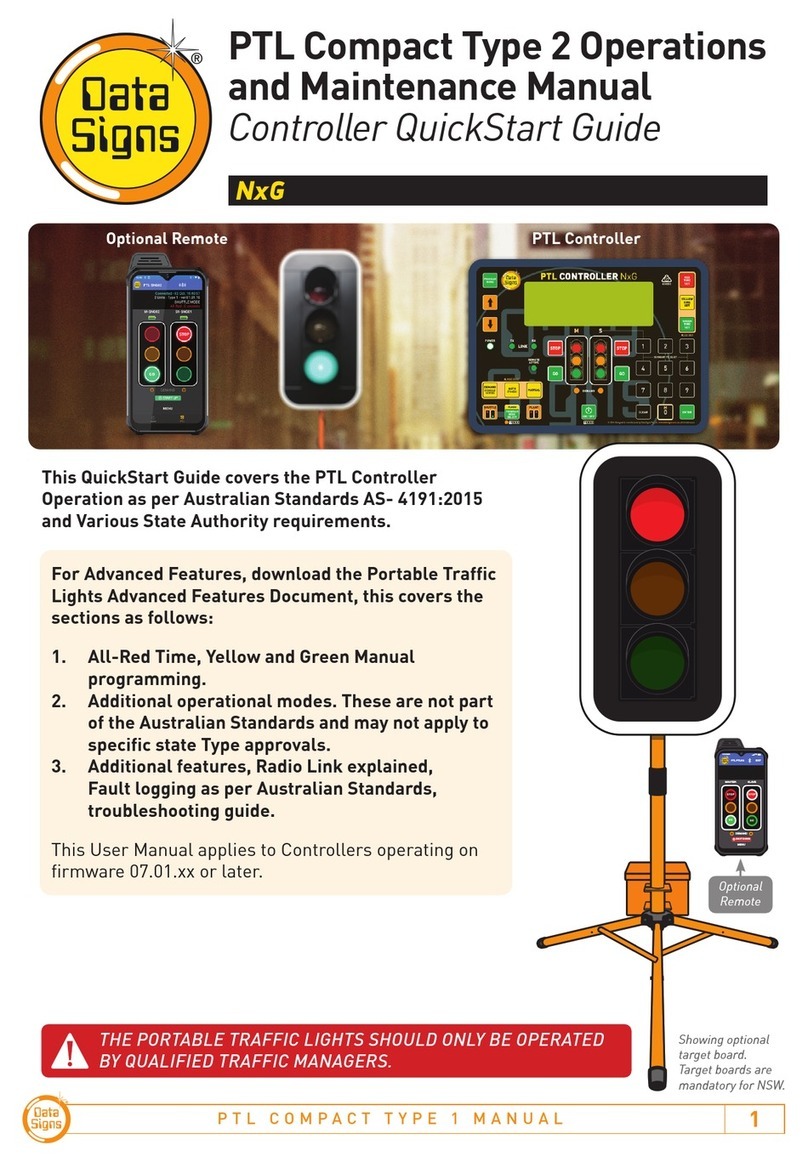
Data Signs
Data Signs PTL Compact 2 Operation and maintenance manual
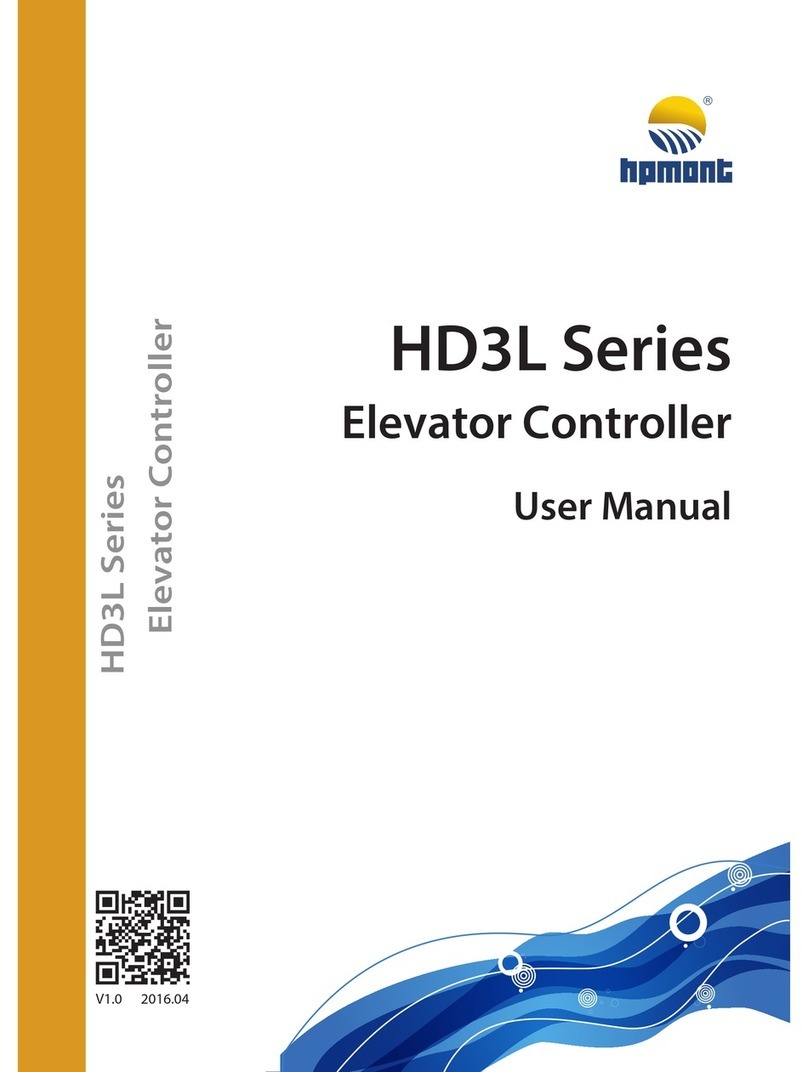
hpmont
hpmont HD3L Series user manual
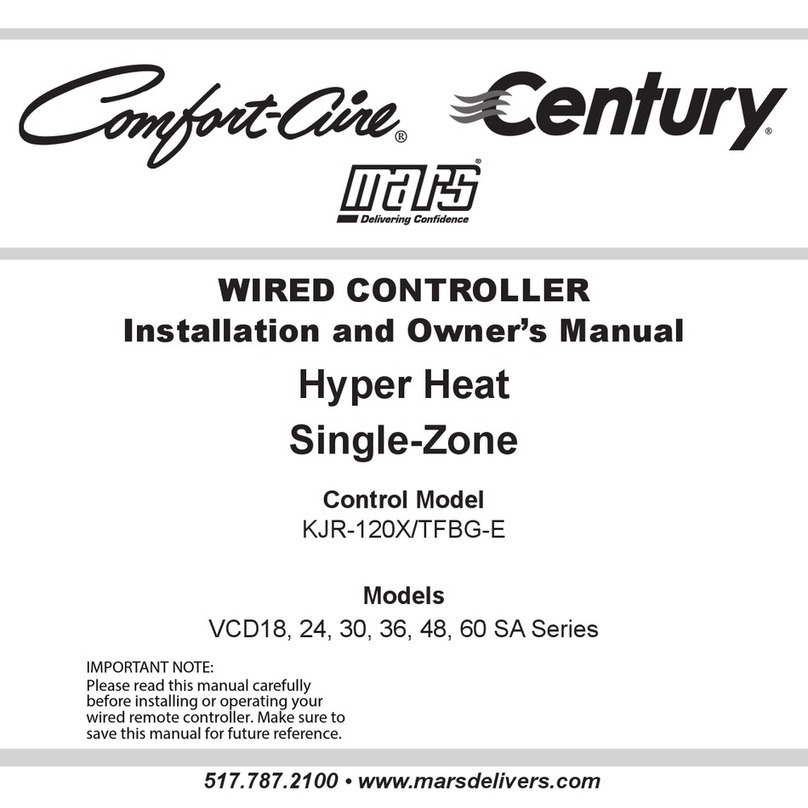
Mars
Mars Comfort-Aire Century MCB18 SA Series Installation and owner's manual
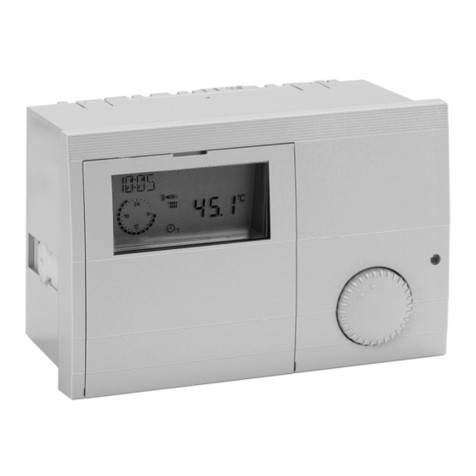
Automatic Heating
Automatic Heating Modulex E8 Operation & User’s Guide
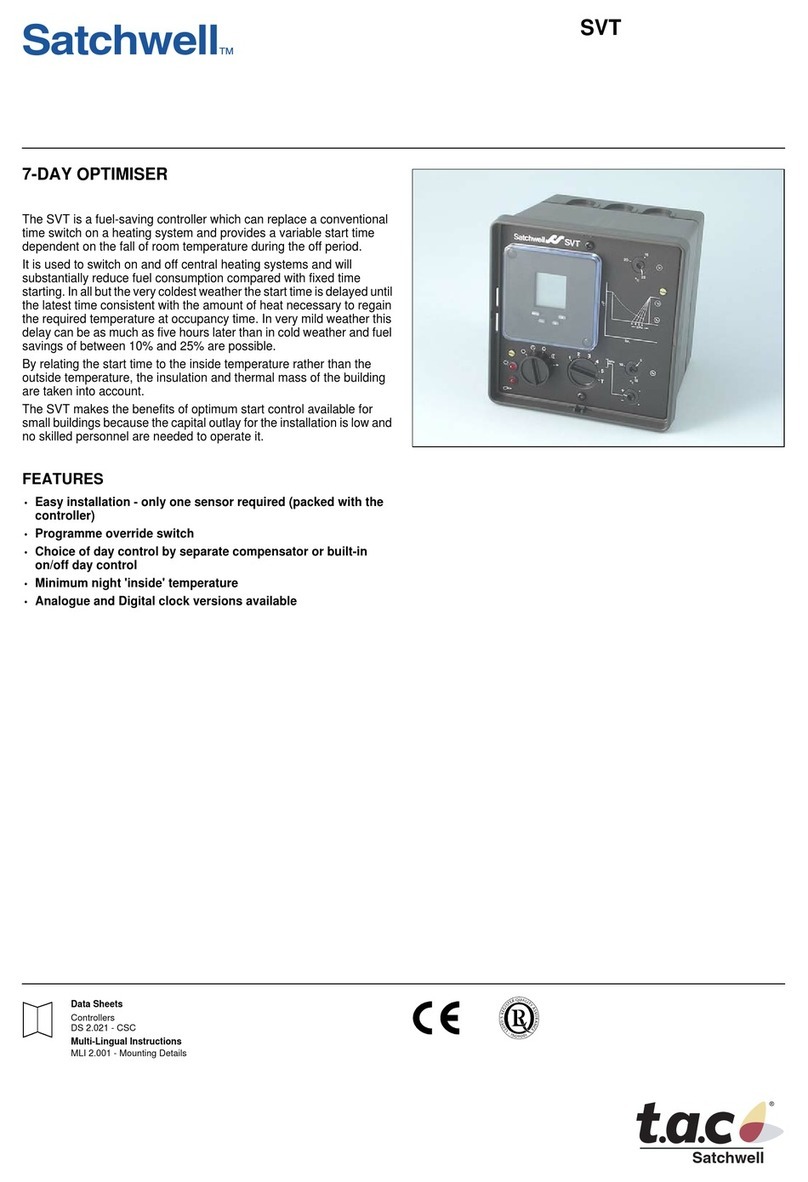
t.a.c.
t.a.c. Satchwell SVT quick start guide
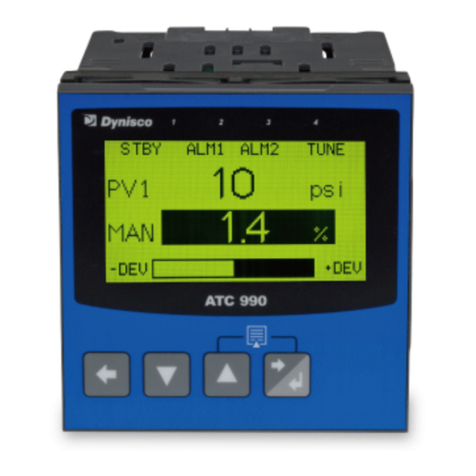
Dynisco
Dynisco ATC990 manual
